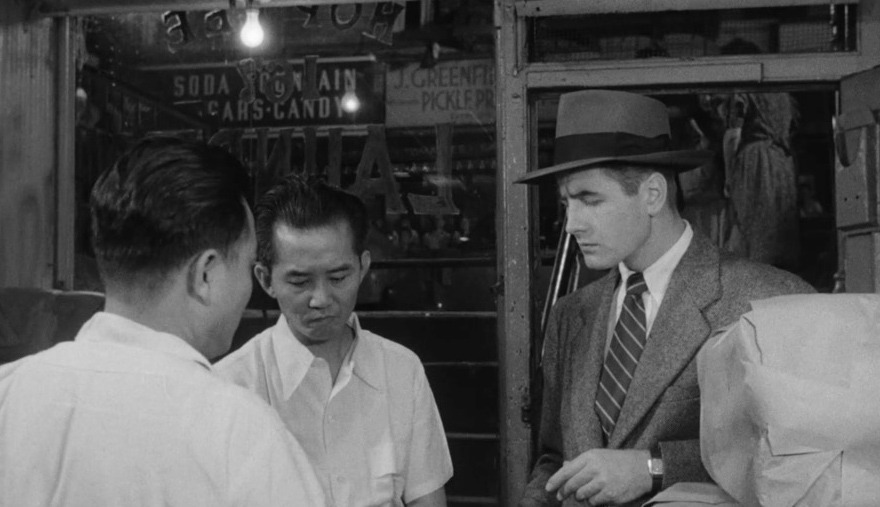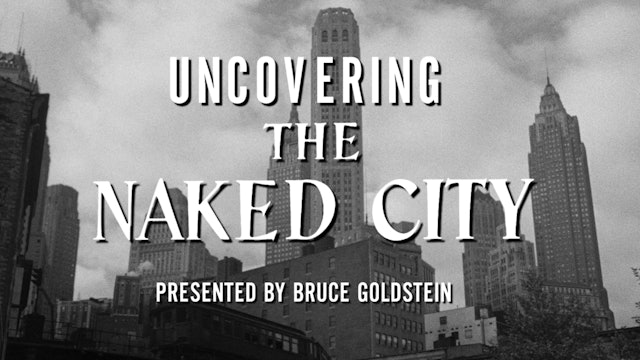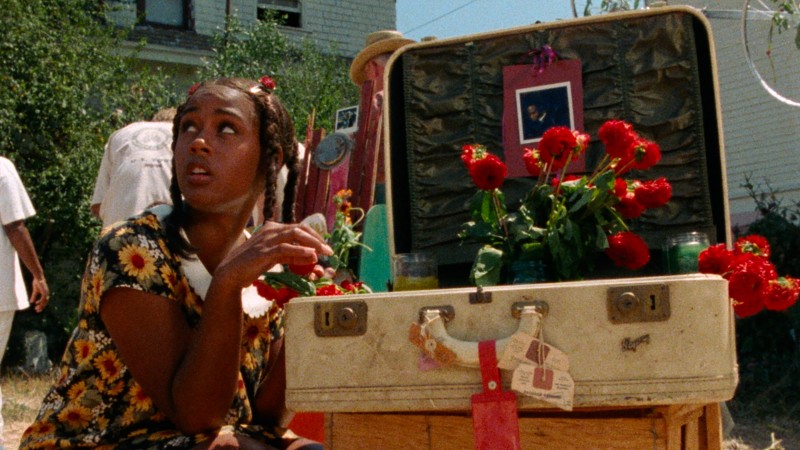Walkers in the City: Jules Dassin and Bruce Goldstein in New York

Uncovering “The Naked City,” Bruce Goldstein’s scintillating chronicle of The Naked City’s groundbreaking New York location shoot, is more than the best “where-they-filmed-it” doc ever made. As Goldstein wittily traces director Jules Dassin’s Gotham roots and influences, this twenty-three-minute documentary—now playing on the Criterion Channel—becomes an irresistible mash note to the teeming vitality of 1947 New York. Goldstein draws revelatory contrasts between the shooting sites then and now, and uses light-fingered cinematic filigree to keep the action swift and clear, the tempo bouncy, and the mood exuberant. The details on the mechanics of Dassin’s production—cinematographer William Daniels devised hidden cameras and simple, compact lighting rigs that enabled him to shoot anywhere, anytime—should be inspirational for film students and for audiences hungry for reality-based movie magic. Uncovering “The Naked City” would be wonderful even if it didn’t contain a shot of young Stanley Kubrick photographing the making of The Naked City for Look magazine. That puts it over the top.
According to screenwriter Malvin Wald, who made more than thirty training and recruitment films for the Army Air Forces during World War II, he was the one who concocted the idea of threading an ultra-realistic homicide investigation in and out of New York City’s actual daily life. Broadway columnist turned producer Mark Hellinger (The Killers) bought Wald’s script (then called, simply, Homicide), took credit for the concept, and embraced it. In the words of the producer’s biographer, Jim Bishop, Hellinger knew that the movie “had to be so New Yorkerish that it looked like a documentary.” He renamed it Naked City after Arthur “Weegee” Fellig’s 1945 collection of sensational on-the-spot photography. (No one knows who added The.) In return, Hellinger paid Weegee a fee that he split with his publisher, and employed the photographer at $100 a week as a “technical adviser” (as Kubrick would on Dr. Strangelove). Best of all, Hellinger used his New York newsman connections to Mayor William O’Dwyer and Police Commissioner Arthur Wallander to open the entire city to his cameras, from the Williamsburg Bridge to the morgue at Bellevue Hospital.
Dassin and Hellinger had collaborated on the prison film Brute Force the year before. Hellinger must have sensed how deeply Dassin loved New York. Still, Hellinger, unlike Louis de Rochemont (who produced 1945’s The House on 92nd Street and 1947’s Boomerang at 20th Century Fox), had never worked with documentary-style stories or techniques. Wald said the producer considered shelving the project until Dassin convinced him they could master a homegrown neorealism with the help of Albert Maltz, who wrote the shooting script.
Interviewed before the rerelease of Rififi (1955) in 2000, Dassin told me that he edited The Naked City in Los Angeles and went back to New York to direct a play. He thought Hellinger must have then succumbed to pressure from Universal executives to cut his most pointed juxtapositions of glitz and poverty or middle-class coziness and homelessness. Seeing the re-edited film for the first time at the New York premiere, Dassin said, “I walked off in tears.” He couldn’t appreciate that despite the studio-imposed changes to his work, his fearless direction had succeeded in portraying a city (as James Agee wrote in an unsigned review for Time) “bursting with energy, grandeur, sunlight, human variety and an eager journalistic glamor.”
No stranger to innovation, Dassin had acted in New York’s proletariat Yiddish theater, ARTEF, and, in his Broadway debut as a director, used Living Newspaper techniques for Medicine Show (1940), a call for socialized medicine. In Uncovering “The Naked City,” Goldstein, a friend of Dassin’s in his later years, connects the warmth and vigor beneath the movie’s commonplace storyline to the director’s bond with his hometown.
Goldstein shares Dassin’s instinctive understanding of New York as a vital organism: by the end of Uncovering “The Naked City,” we know in our viscera why city planners call bridge and road systems “arteries.” It’s not surprising that Fresh Air’s Terry Gross chose to interview Goldstein after 9/11, or that he recently recorded a COVID-time pep talk for the nonprofit New York Forever. Goldstein’s record as founder of the reissue distributor Rialto Pictures and repertory program director of New York’s Film Forum reflects his city’s wry, eclectic sensibility as well as his own.
After The Naked City, Dassin didn’t direct another movie in New York for twenty-seven years. A Communist who joined the Party in the mid-1930s and left it in 1939, after the Soviet nonaggression pact with Hitler’s Germany, he survived the blacklist as an expatriate director. He made Rififi, his comeback picture, in Paris: its virtuoso silent jewelry heist put him on the map as an international auteur. He then collaborated on numerous movies with Greek superstar Melina Mercouri, his second wife. He always did his best work on the streets. In 2000, Dassin told me, “The only way you really prepare locations is to walk.” That method generated the evocative atmospheres not just in The Naked City and Rififi, but also in Thieves’ Highway (1949, filmed in San Francisco and Oakland), and his masterpiece, Night and the City (1950, London).
Like Dassin, Goldstein is a walker in the city, savoring the gusto of its streets and scanning every building in his path for untold history or fresh life. He made Uncovering “The Naked City” in the late spring, summer, and fall of 2020.
“If you look quick, you can see one or two people with masks. One masked guy whizzes by on a bicycle,” Goldstein notes, in an email. “But the only real noticeable clue that it was shot during the pandemic is the marquee of Cinema One and Two.”
Uncovering “The Naked City” pulses with Goldstein’s love and optimism for moviemaking—and New York.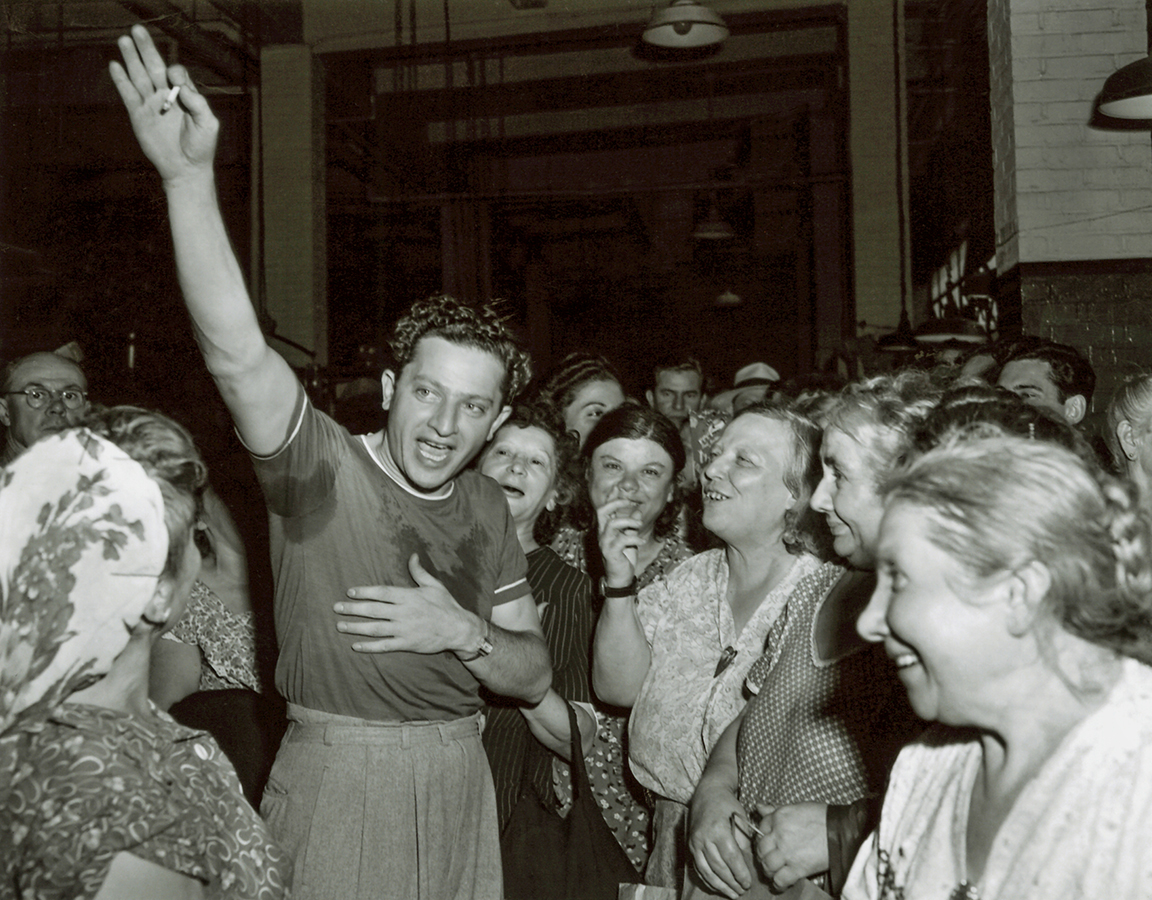
Jules Dassin, with ever-present cigarette in hand, directs some local baleboosteh extras at the Essex Street Mark on the Lower East Side. It was one of the hottest summers on record.
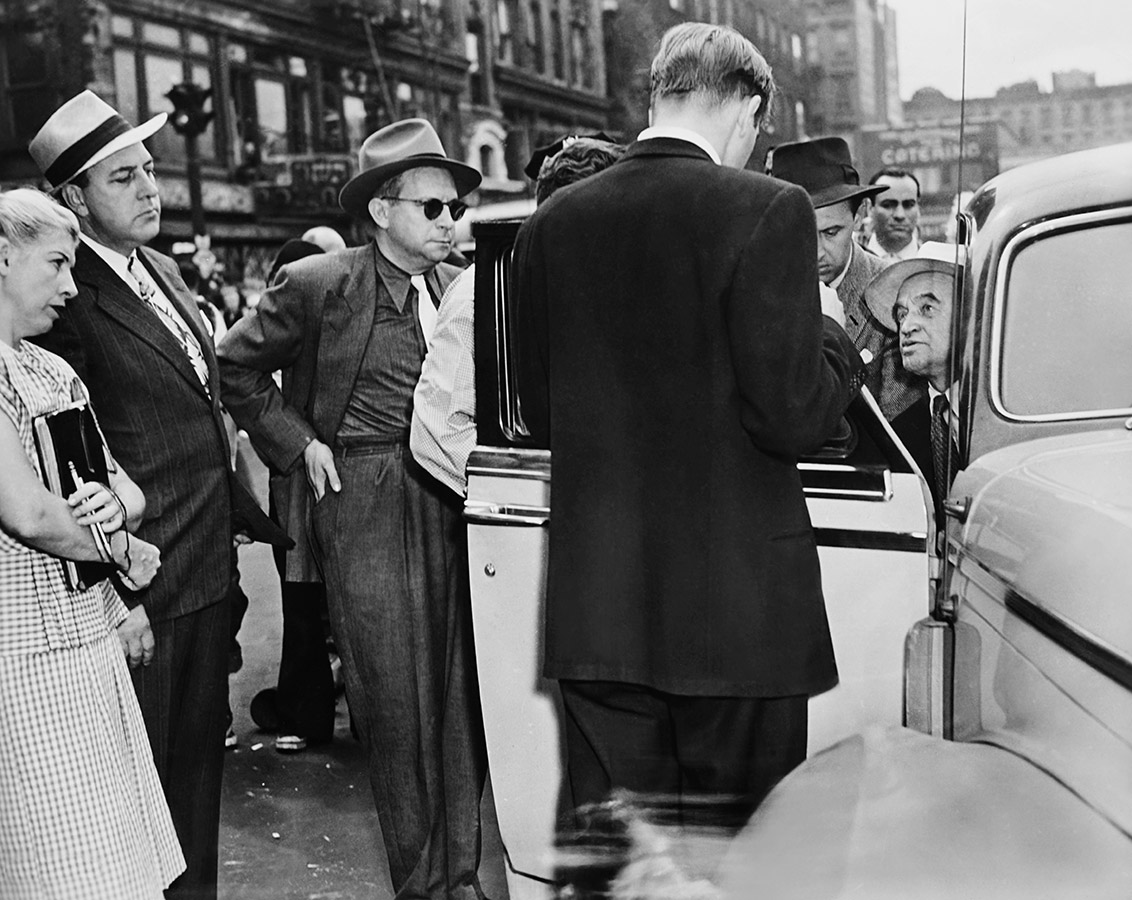
Left to right: script supervisor Mary Chaffey, technical advisor Capt. Frank Lent, producer Mark Hellinger, and actors Don Taylor and Barry Fitzgerald on Delancey Street near the foot of the Williamsburg Bridge
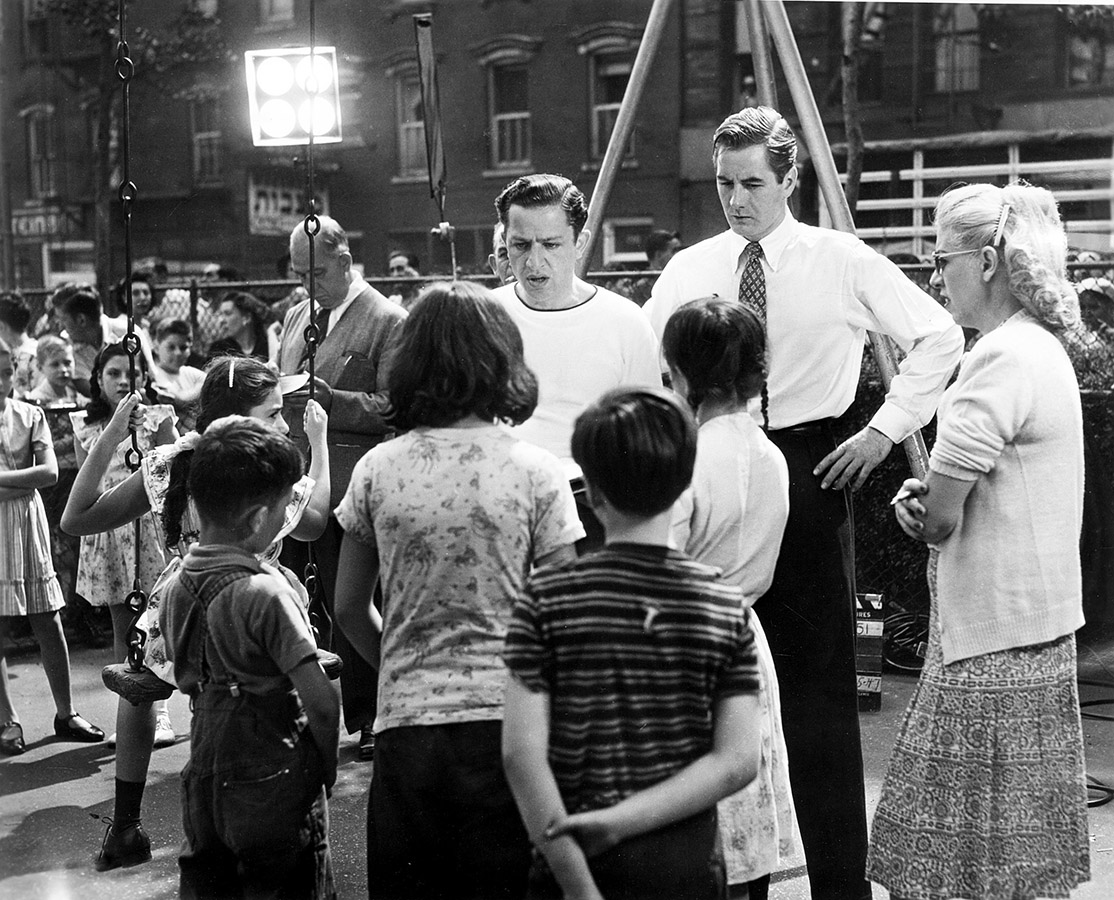
Dassin, Taylor, and Chaffey on the Lower East Side, in front of one of William Daniels’s ultra-compact lighting rigs

(Right photo by Bruce Goldstein)

